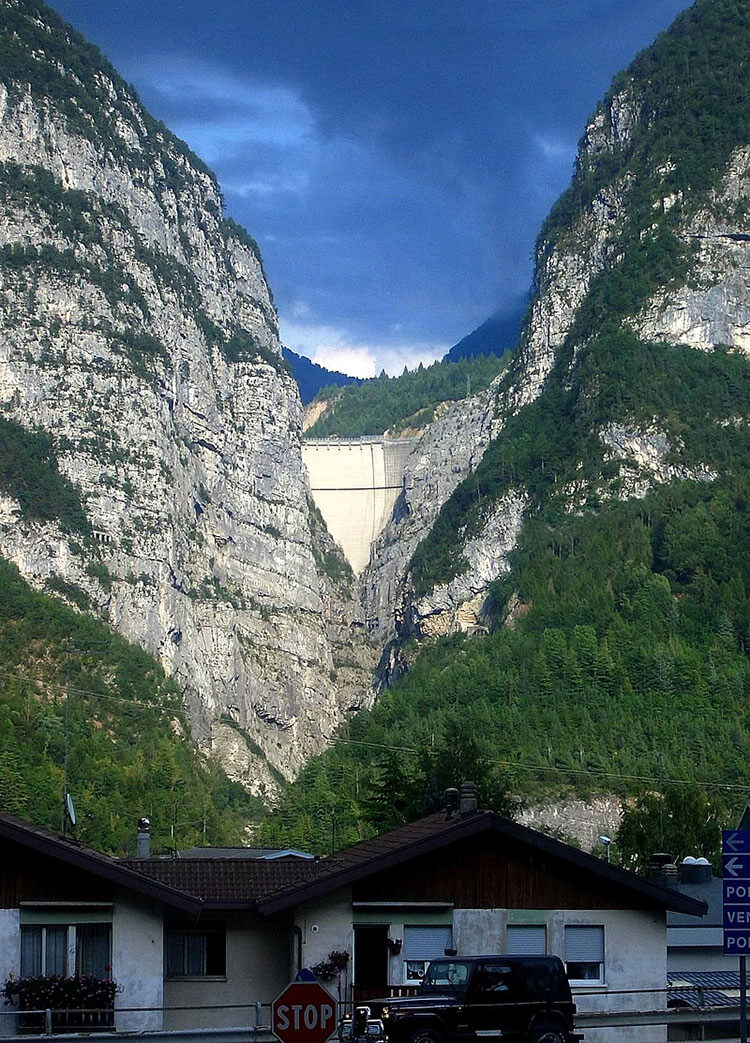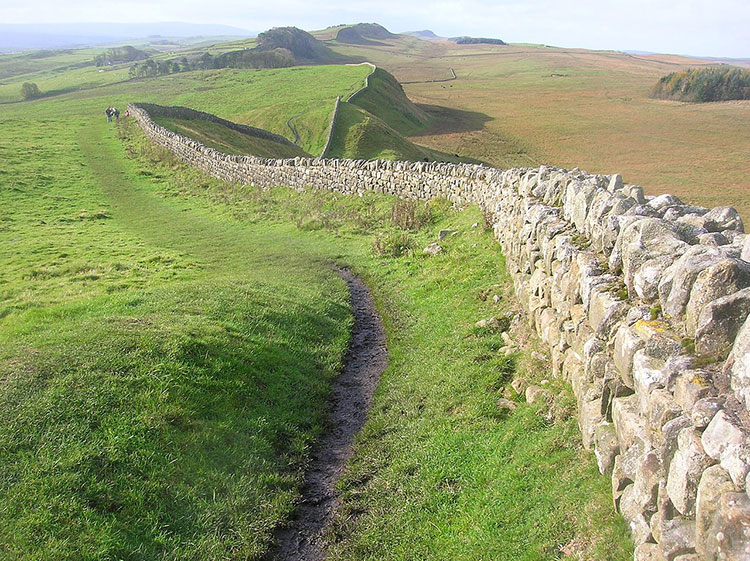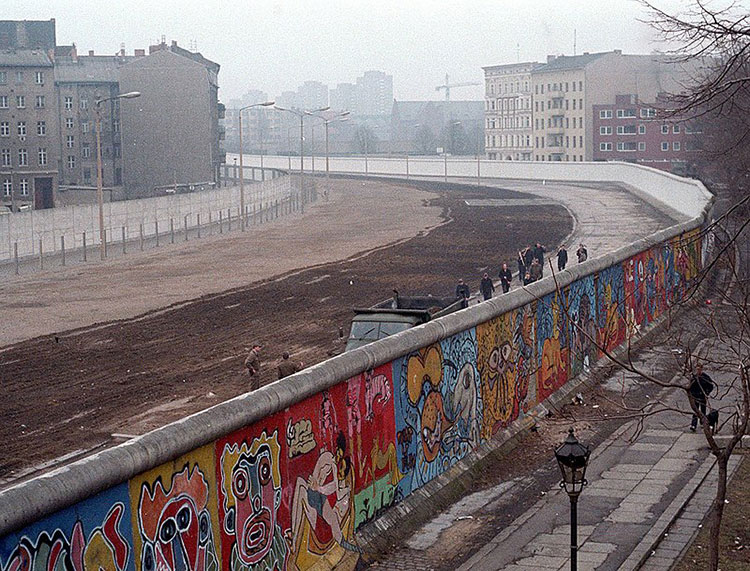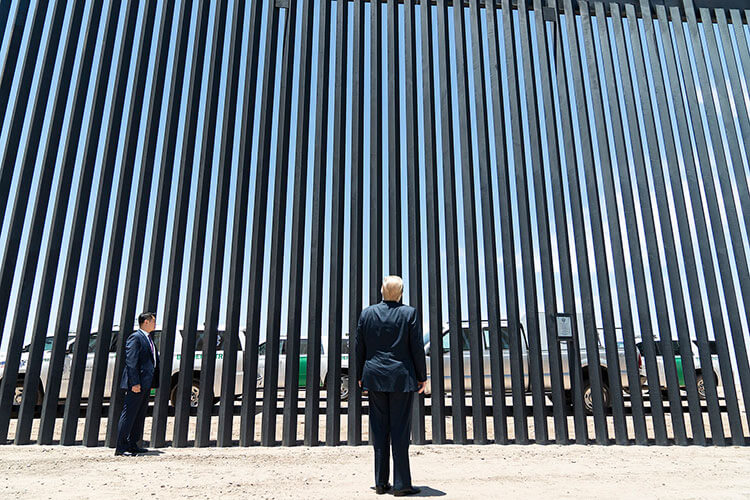
Other Huge Walls, But Not That High
The Great Wall of China
Spanning over 13,000 miles, the Great Wall of China stands as a symbol of China’s historical strength and determination. Built over multiple dynasties, this monumental structure was primarily intended to fend off invasions. Beyond its military purpose, the Wall also controlled trade along the Silk Road. With its watchtowers, fortresses, and vast stretches meandering through varied terrains, it remains one of the most impressive architectural feats in history and a testament to ancient China’s prowess.
The Walls of Babylon
The ancient city of Babylon, situated in present-day Iraq, was once enclosed by mighty walls deemed impenetrable. Chronicled by historians like Herodotus, these walls showcased the grandeur of Babylon under King Nebuchadnezzar II. Featuring double walls for added defense and monumental gates, including the famed Ishtar Gate, the Walls of Babylon remain emblematic of Mesopotamia’s golden age.
Hadrian’s Wall
Built under the Roman Emperor Hadrian’s reign in the 2nd century AD, Hadrian’s Wall was a defensive fortification in Northern England, marking the boundary of the Roman Empire in Britain. Stretching around 73 miles from the Irish Sea to the North Sea, it consisted of forts, turrets, and ramparts. Today, it offers glimpses into Roman Britain’s history, symbolizing the vast reach of the Roman Empire.

Walls of Benin
The Walls of Benin, located in present-day Nigeria, were once considered the world’s largest man-made earth structure. Comprising a series of interconnected walls and ditches, they covered over 16,000 square kilometers. Built to enhance the kingdom’s defense and trade, they stood for centuries, reflecting the legacy of the Benin Empire and its sophisticated urban planning and engineering capabilities.
Berlin Wall
Constructed in 1961, the Berlin Wall became the emblematic divider between East and West Berlin during the Cold War era. Spanning 96 miles, its primary intent was to prevent East Germans from fleeing to the West. Over its 28-year existence, it became a symbol of the ideological chasm between communism and democracy. Its fall in 1989 marked a monumental turn in global history, leading to Germany’s reunification.

Huge Walls That Weren’t Finished or Just Exist in Movies
“The Wall” or “Trump Wall” – A Never Finished Project
“The Wall,” often referred to as the Trump Wall, stands as one of the most debated and emblematic promises of Donald Trump’s 2016 presidential campaign. Intending to address illegal immigration and drug trafficking from Mexico into the United States, the proposed barrier sought to expand and fortify existing fences along the U.S.-Mexico border. Spanning nearly 2,000 miles, the border had already seen various barriers, but Trump’s vision was for a more extensive, continuous, and imposing structure.
Funding and construction of the wall became central points of contention both domestically and internationally. While some portions were built or enhanced during Trump’s tenure, the complete vision of a coast-to-coast wall remained unrealized. To its supporters, the wall symbolized a firm stance on immigration and national security. To its critics, it represented a divisive and overly simplistic approach to a complex issue.

The Ice Wall from “Game of Thrones”
In the realm of Westeros, as imagined by George R.R. Martin in “Game of Thrones,” the Ice Wall stands as an immense fortification, both physically and symbolically. Towering at 700 feet and stretching over 300 miles, it is constructed entirely of ice and represents the northern boundary of the Seven Kingdoms. Guarded by the Night’s Watch, the Wall serves as a bulwark against the dangers lurking in the wilderness beyond, from Free Folk to the mythical White Walkers.
Over the series, the Wall becomes a symbol of division, representing the challenges and threats outsiders can pose, as well as the lengths society will go to protect itself. Its colossal size and mystical aura encapsulate the blend of realism and fantasy that “Game of Thrones” is celebrated for, serving as a backdrop for pivotal events and character developments in the series.
Deep Dive: Historic Significance of Walls in Ancient Civilizations
Famous Walls in Ancient Civilizations: Structures like the Walls of Babylon or Hadrian’s Wall served multiple purposes. Apart from defense, they stood as symbols of power, with rulers using them to demonstrate their might and control.
Defense and Purpose of Historic Walls: While most walls, such as the Berlin Wall, had clear political and defensive intentions, others, like the Western Wall in Jerusalem, served religious and cultural purposes, becoming centers of pilgrimage and reverence.
Engineering Marvels Behind the World’s Highest Walls
Ancient engineers faced numerous challenges, from transporting massive stones without modern machinery to ensuring the stability of these mammoth structures. For instance, Sacsayhuaman in Peru features boulders weighing up to 200 tons, intricately fitted without mortar.
Depending on the region and available resources, a variety of materials were used. The Walls of Ston, for instance, were constructed using limestone, while the Walls of Babylon were known for their mud bricks.
Tourism and the Allure of Monumental Walls
Walls like the Great Wall of China or Hadrian’s Wall in England have become significant tourist attractions. They drive local economies and provide insights into the region’s history, culture, and architectural achievements. For instance, the Great Wall alone attracts tens of millions of visitors each year, contributing significantly to China’s tourism industry.
FAQ: Tallest Artificial Walls in the World
Which is the tallest man-made wall in the world?
The Rogun Dam in Tajikistan currently holds the title for the tallest man-made wall. Standing at an impressive 335 meters (1,099 feet), it’s a rock-fill dam primarily used for hydroelectric power generation.
How does the height of the Great Wall of China compare to other artificial walls?
The Great Wall of China, while extensive in length, isn’t exceptionally tall compared to other structures. Its height varies between 5 to 8 meters, making it dwarfed by many modern man-made walls, especially dams.
What purpose do the tallest artificial walls serve in their respective regions?
Most of the world’s tallest artificial walls are dams, serving purposes like hydroelectric power generation, water storage for irrigation, and flood control. They play crucial roles in the economic and infrastructural development of their regions.
When and why was the world’s highest artificial wall built?
The world’s highest artificial wall, the Rogun Dam, began construction in the 1980s but faced several delays. Its primary purpose is hydroelectric power generation, helping Tajikistan achieve energy independence.
What materials are predominantly used in the construction of the tallest walls?
The materials vary based on the wall’s purpose. Many of the tallest walls, like dams, are made of concrete, rock-fill, or a combination of both. Steel reinforcements, clay cores, and other materials may also be incorporated for added strength and functionality.
What are the engineering challenges faced during the construction of enormous artificial walls?
Building such massive structures requires addressing geological conditions, ensuring wall stability, and managing massive water pressures. Other challenges include sourcing construction materials, environmental concerns, and ensuring the safety of both workers and the surrounding communities.
How have the world’s tallest walls withstood the test of time and environmental conditions?
Through advanced engineering, regular maintenance, and use of durable materials, many of these walls remain functional and safe. Their ability to withstand time and conditions often lies in their design, which accounts for regional environmental factors, potential seismic activity, and other potential risks.
To Summarize the Above
From their historic significance to their awe-inspiring engineering, the world’s tallest man-made walls continue to fascinate us. Whether they stand as testaments to human conflict, ambition, or sheer architectural brilliance, these walls are undeniably an integral part of our global heritage. As we admire their grandeur, they serve as silent reminders of our past, challenging us to build a future that values unity over division.






Leave a Reply